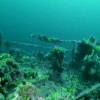
3D Reconstruction of Underwater Scenes
There is a large and growing demand across many industries for underwater inspection technologies. Whether the assets in question are offshore oil rigs owned by energy companies, undersea power or data cables owned by utilities, or large pipe networks owned by municipalities, the problem is the same: critical assets are in need of assessment and maintenance but inspection is difficult and expensive due to their underwater location.

Humans easily recognize and identify actions in video but automating this procedure is challenging. To this end, in the action recognition project, we introduce an effective temporal filtering of the video signal, a multi-resolution action representation scheme, and an efficient classification approach to improve action recognition performance in a discriminative bottom-up framework.
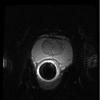
Bias Field Correction in Endorectal Diffusion Imaging
Diffusion-weighted MRI (DWI) has been useful in prognosis due to its improved visualization of dense cancerous tissue due to restricted diffusion of water in these regions. An additional endorectal coil has been used to improve the signal-to-noise ratio (SNR) in the prostate gland region however introduces an undesirable bias field which shows increased intensity nearest the coil which diminishes with distance. A bias field correction method was developed here at VIP that automatically estimates the bias field and corrects for it.

New imaging technologies have allowed us to see things at a new level of clarity and detail, or even see things that we were previously unable to visualize. However, a significant challenge faced by many new imaging technologies that limits widespread use for particular applications is long acquisition times. For example, despite the advantages associated with magnetic resonance imaging (MRI) for cancer screening such as higher tissue sensitivity and no exposure to ionizing radiation, the long acquisition times associated with MRI can signficantly limit the number of screenings that can...
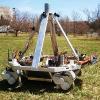
Computer Vision for Autonomous Robots
Exploration is an important and active area of research in field robotics, as vehicles capable of autonomous exploration have the potential to significantly impact a wide range of applications such as search and rescue operations, environmental monitoring, and planetary exploration. Such autonomous exploration capabilities are desirable for Lunar and Martian missions as tele-operation becomes cumbersome due to large transmission delays.

We introduce a new form of diffusion magnetic resonance imaging called correlated diffusion imaging, where the tissue being imaged is characterized by the joint correlation of diffusion signal attenuation across multiple gradient pulse strengths and timings. By taking into account signal attenuation at different water diffusion motion sensitivities, correlated diffusion imaging can provide improved delineation between cancerous tissue and healthy tissue when compared to existing diffusion imaging modalities

The accurate detection of object boundaries via active contours is an ongoing research topic in computer vision. Most active contours converge towards some desired contour by minimizing a sum of internal (prior) and external (image measurement) energy terms. Such an approach is elegant, but suffers from a slow convergence rate and frequently mis-converges in the presence of noise or complex contours. To address these limitations, a decoupled active contour (DAC) is developed which applies the two energy terms separately.

A problem of great interest in the field of visual pattern recognition is image registration, where images of the same scene captured under different conditions are aligned with each other. Image registration is important to a wide range of applications, such as environment change analysis, superresolution, biomedical image analysis, and computer-assisted surgery. Much of recent research in image registration has focused on multimodal image registration, where images captured using different imaging modalities are registered together.
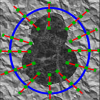
Enhanced Decoupled Active Contour Using Structural and Textural Variation Energy Functionals
Active contours are a popular approach for object segmentation that uses an energy minimizing spline to extract an objects boundary. Non-parametric approaches can be computationally complex while parametric approaches can be impacted by parameter sensitivity. A decoupled active contour (DAC) overcomes these problems by decoupling the external and internal energies and optimizing them separately. However a drawback of this approach is its reliance on the edge gradient as the external energy.
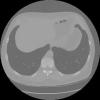
Enhanced Low-dose Computed Tomography
Low-dose CT is a more desirable alternative however it has reduced signal-to-noise ratio (SNR) and streaking artifacts that make diagnosis and visualization difficult. This work proposes a reconstruction approach called Spatially Adaptive Monte Carlo Reconstruction (SAMCR) that corrects for the non-stationary noise in low-dose CT using a spatially-adaptive approach.
![]()
Grid Seams: A fast superpixel algorithm for real-time applications
Grid Seams is a novel seam carving approach to superpixel generation that preserves image structure information while enforcing a global spatial constraint in the form of a grid structure cost. The seam based approach allows us to obtain superpixels faster than all existing methods while maintaining a high image representation accuracy. Furthermore, our approach allows us to easily incorporate not only structural information but other useful image properties such as texture.

Hybrid Structural and Texture Distinctiveness Vector Field Convolution for Region Segmentation
The segmentation of objects has been an area of interest in numerous fields. The use of texture has been explored to improve convergence in the presence of cluttered backgrounds or objects with distinct textures, where intensity variations are insufficient. Additionally, saliency and feature maps have been applied for contour initialization. However, taking advantage of texture to improve initialization and convergence has not been extensively explored.
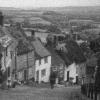
One of the fundamental challenges in the field of image processing and computer vision is image denoising, where the underlying goal is to estimate the original image by suppressing noise from a noise-contaminated version of the image. Image noise may be caused by different intrinsic (i.e., sensor) and extrinsic (i.e., environment) conditions which are often not possible to avoid in practical situations. Therefore, image denoising plays an important role in a wide range of applications such as image restoration, visual tracking, image registration, image segmentation, and image...
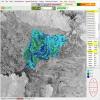
The MAp-Guided Ice Classification (MAGIC) system is designed specifically to read and interpret synthetic aperture radar (SAR) sea ice images using associated ice maps as provided by the Canadian Ice Service (CIS). An ice chart is manually created at the CIS based on the corresponding SAR image and other ancillary data to provide ice concentrations, types, and floe sizes within enclosed ‘‘polygon’’ regions. MAGIC uses such information as input and then generates a sensor resolution (pixel-based) ice map for each polygon, a product not feasibly produced manually.

Multiplexed Optical High-coherence Interferometry
Depth Profilometry involves the measurement of the depth profile of objects, and has significant potential for various industrial applications that benefit from non-destructive sub-surface profiling such as defect detection, corrosion assessment, and dental assessment to name a few. We have devised and introduced a new sensing modality for depth profilometry using an Multiplexed Optical High-coherence Interferometry (MOHI) instrument.
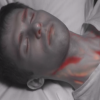
Coded Hemodynamic Imaging (CHI), is a process where an innovative, highly-compact pulsed lighting and detection apparatus captures light fluctuations over time and space on various parts of the body simultaneously using spatiotemporal-coded pulse sequences. These spatiotemporal light fluctuation measurements are then relayed to a digital signal processing unit from which blood-flow patterns can be computed. CHI enables touchless monitoring of vital signs that could lead to improved detection and prevention of some cardiovascular issues, as well as greater independence for older adults.
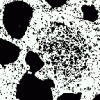
Porous media include a variety of materials, such as bone, cartilage, concrete, soil, and wood. All such materials allow the flow of water, or other liquids, and the understanding and modeling of this flow can be essential in areas of human health, construction, and groundwater studies. The image processing challenge in porous media is the reconstruction of the 3D architecture of void spaces given some sort of data, a particularly challenging task since many porous media contain pore structures on a wide range of scales.
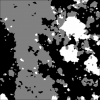
The systematic evaluation of synthetic aperture radar (SAR) data analysis tools, such as segmentation and classification algorithms for geographic information systems, is difficult given the unavailability of ground-truth data in most cases. Therefore, testing is typically limited to small sets of pseudo ground-truth data collected manually by trained experts, or primitive synthetic sets composed of simple geometries.
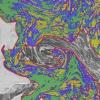
Satellite SAR Sea Ice Classification
To facilitate the classification of SAR Sea Ice images, the VIP lab has created a program called MAGIC which allows algorithms to be tested and the results compared easily.

Melanoma is considered the most deadly form of skin cancer and is caused by the development of a malignant tumour of the melanocytes. The objective of the skin cancer detection project is to develop a framework to analyze and assess the risk of melanoma using dermatological photographs taken with a standard consumer-grade digital camera. Our data set is provided at the end of the page.
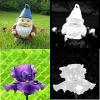
Statistical Textural Distinctiveness for Salient Region Detection in Natural Images
A novel statistical textural distinctiveness approach for robustly detecting salient regions in natural images is proposed. Rotational-invariant neighborhood-based textural representations are extracted and used to learn a set of representative texture atoms for defining a sparse texture model for the image. Based on the learnt sparse texture model, a weighted graphical model is constructed to characterize the statistical textural distinctiveness between all representative texture atom pairs.

Stereo Vision for Dimension Estimation
We designed a system for inferring package volumetric dimensions in collaboration with a Canadian transportation company, Rogue Specialty Transport. When a client hires a transportation company to ship their goods, the main component used to calculate cost of delivery is the volume of the package. Currently, the standard is to hire personnel to traverse the warehousing facilities prior to shipment, and measure the dimensions using a pen-and-paper system. This is costly, prone to human error, and is very time consuming.

Texture Classification is the problem of distringuishing between textures, a classic problem in pattern recognition. Since many very sophisticated classifiers exist, the key challenge here is the development of effective features to extract from a given textured image.
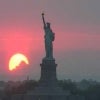
VIP Illumination Saliency Dataset
A set of images used for evaluating illumination invariant saliency detection
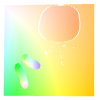
Dataset of RGB-D data for scene flow estimation. Ground truth flow is provided.
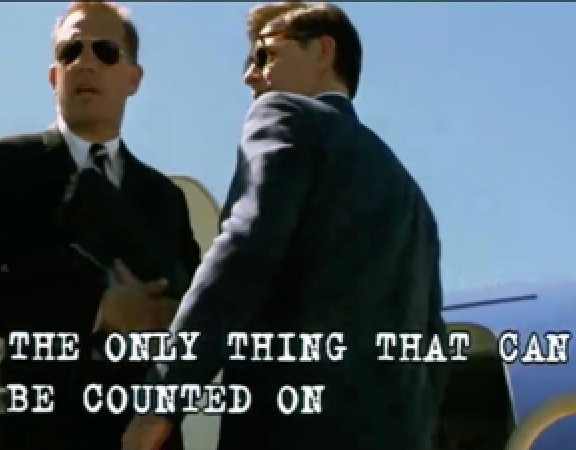
The VIP VPA dataset (VPAD) is a dataset for image and video resolution enhancement assessment. The VPAD consists of a set of videos for various movies, documentary, sports, and TV news channels with the presence of moving and text-like regions.
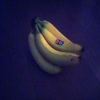
The VIP-LowLight dataset is a set of natural images captured in very low-light conditions. The dynamic range of the images were scaled to show the image content and the corresponding amplification of the ISO noise.
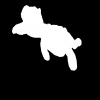
The VIP-Sal is a custom dataset of objects against a non-uniform background, under 3 drastic lighting conditions. Ground truth was obtained through manual segmentation.

The VIP-HARPE is a custom dataset of static images for hockey action recognition and pose estimation (HARPE). The dataset consists of ___images of hand annotated images of 18 joints locations which include, head, thorax, hips, elbows, stick, etc., and grouped into classes such as skating, firm-feet, shooting and passing.

The VIP-HARPET dataset is a dataset of hockey action recognition and pose estimation in temporal space (Harpet) which consists of sequences of 3 images within a span of ___hz. Each sequence is pose annotated with respective classes labeld.




